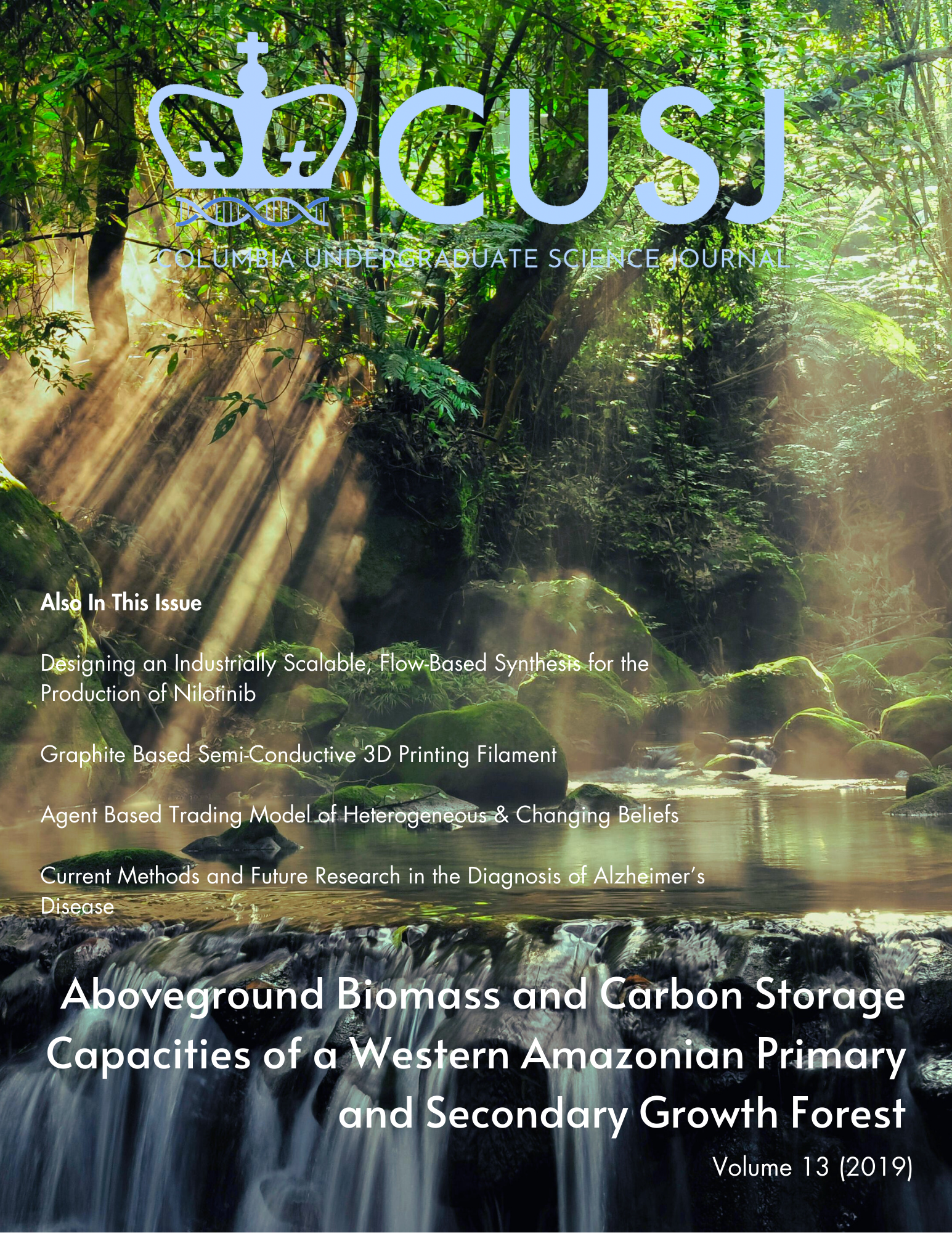Abstract
Amazonian tropical forests are critical to global carbon cycling and sequestration, and in direct danger from deforestation. In order to contribute to limited existing literature on the carbon sequestration potential of secondary forest ecosystems and their aboveground biomass (AGB), we established permanent 0.2-ha plots in a primary and a secondary forest near Iquitos, Loreto, Peru. We measured diameter at breast height (DBH), tree height, and wood density for trees ≥10 cm DBH and took the diameter of lianas at 30 cm shoot extension, then used published allometric equations to estimate AGB and compare it between forests. Trees within the primary forest plot had a significantly greater mean DBH and higher mean wood density, as well as a greater overall AGB than trees within the secondary forest. AGB was calculated to be 322.05 Mg/ha for the primary forest and 51.17 Mg/ha for the secondary forest. Sequestered carbon quantities were 151.36 Mg/ha and 24.05 Mg/ha, respectively. Higher estimates of stored carbon within the primary forest are attributed to old- growth trees with large DBH values and increased wood density, and discrepancies between our carbon estimates for the secondary forest and past estimates for the same site suggest the need to focus more research and attention on allometric equation use. The results of this study provide a potential incentive for carbon sequestration funding to be awarded to the primary forest property studied and establish a foundation for future estimations of the carbon storage capacities of tropical secondary forests.

This work is licensed under a Creative Commons Attribution 4.0 International License.
Copyright (c) 2019 Bailey Nordin

